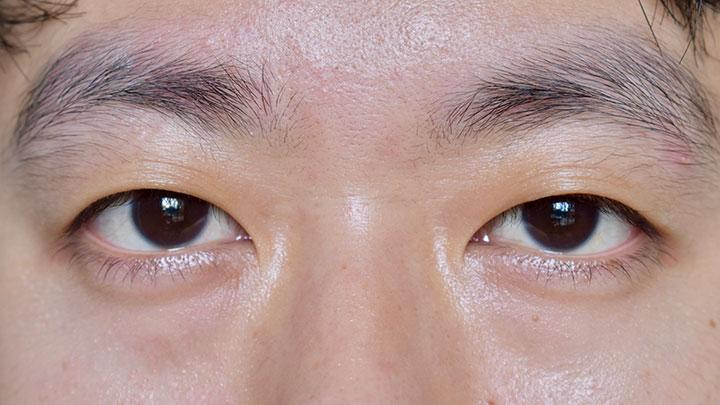Definisi
Epikantus adalah keadaan di mana terdapat lipatan vertikal pada kulit pangkal hidung yang menyebabkan selaput putih pada mata bagian dekat hidung tidak terlihat jelas. Hal ini merupakan kondisi kelopak mata bawaan yang paling umum ditemukan. Lipatan epikantus juga merupakan karakteristik bentuk mata pada orang Asia Timur dan Asia Tengah, bisa juga ditemukan pada beberapa penduduk asli Amerika dan orang Eropa (contohnya orang Skandinavia).
Epikantus biasanya dikaitkan dengan beberapa penyakit, diantaranya ptosis bawaan (turunnya kelopak mata), sindrom down, dan blefarofimosis (kelainan di mana terjadi pemendekan pada jaringan kelopak mata baik vertikal maupun horizontal).
Penyebab
Epikantus sering terdapat pada ras mongoloid. Keadaan ini dapat terjadi dengan sendiri atau diikuti penyakit lain, diantaranya :
- Telekantus (jarak antara kedua ujung sebelah dalam sudut mata melebihi normal).
- Ptosis (turunnya kelopak mata).
- Cedera yang mengenai mata.
- Sebagai kelainan akibat dari penyakit bawaan, seperti :
- Sindrom down, yaitu kelainan bawaan yang dapat menyebabkan retardasi mental dan gangguan perkembangan. Anak yang lahir dengan sindrom down memiliki muka mongoloid (mongoloid face), leher pendek, dan telinga tidak normal.
- Sindrom fetal alkohol, yaitu sindrom yang terjadi akibat ibu mengonsumsi alkohol saat hamil. Konsumsi alkohol berlebihan dapat mengakibatkan terganggunya pertumbuhan janin, wajah yang tidak normal, berat badan bayi lahir rendah, dan lipatan epikantus. Anak dengan sindrom fetal alkohol memiliki gangguan pada penglihatan dan pendengaran.
- Sindrom turner, yaitu salah satu kelainan bawaan yang terjadi pada wanita di mana terjadi kelainan pada kromosom X (kromosom seks). Keluhannya dapat berupa terjadinya gangguan kesuburan, bertubuh pendek, dan terdapat lipatan epikantus pada mata.
- Sindrom noonan, yaitu kelainan genetik atau bawaan di mana dapat memengaruhi perkembangan dan pertumbuhan normal. Keluhan yang dapat ditemukan berupa kelainan jantung dan kelainan bentuk dada.
- Sindrom william terdiri dari berbagai kelainan, seperti kelainan pada ginjal, jantung, gangguan perkembangan, dan ketidakmampuan belajar. Gejala klinis yang ditemukan dapat berupa bertubuh pendek, mulut yang lebar, mata tampak bengkak dan adanya lipatan epikantus.
- Usia. Beberapa janin kehilangan lipatan epikantus setelah usia 3-6 bulan kehamilan. Lipatan epikantus biasanya terlihat pada anak kecil dari berbagai suku, khususnya saat hidung belum berkembang sepenuhnya.
Faktor Risiko
Terdapat beberapa faktor risiko berdasarkan populasi tempat tinggal dan beberapa penyakit yang bisa menyebabkan epikantus, antara lain:
- Populasi berisiko tinggi, diantaranya berasal dari Asia Tenggara, Asia Timur, Asia Utara, Asia bagian Tengah, penduduk asli Amerika.
- Populasi berisiko rendah, diantaranya orang Eropa (contohnya Inggris, Rusia, Irlandia)
- Hamil di usia lanjut.
- Riwayat memiliki anak dengan kelainan bawaan.
- Konsumsi alkohol.
Gejala
Orang tua biasanya membawa anak saat menemukan kondisi sebagai berikut :
- Penampilan menjadi aneh akibat lipatan pada mata (estetika).
- Mata tampak juling.
- Mata sipit.
- Penglihatan menjadi kabur.
- Penglihatan berbayang.
- Keluhan disertai dengan turunnya kelopak mata (ptosis).
- Terganggunya aliran air mata yang bisa menyebabkan pembengkakan mata.
- Lagoftalmus (keadaan di mana mata tidak dapat menutup sempurna).
Diagnosis
Mendiagnosis epikantus bukan suatu hal yang sulit. Dokter akan mendiagnosis melalui pemeriksaan fisik dan pemeriksaan menggunakan slit lamp.
Diagnosis epikantus dapat dibagi sesuai kondisi kelainan pada lipatan mata, yaitu :
- Epikantus Supra siliaris (jika lipatan muncul dari bawah alis mata menuju ke saluran air mata di dekat hidung).
- Epikantus Palpebralis (jika lipatan sama-sama menonjol pada kelopak mata bawah dan kelopak mata atas, tipe epikantus ini mirip dengan supra siliaris).
- Epikantus Tarsalis (jika lipatan epikantus berjalan di sepanjang kelopak mata atas, jenis epikantus ini secara normal dapat terjadi pada orang Asia).
- Epikantus Inversus (jika lipatan muncul di kelopak mata bawah dan berjalan ke atas).
Selain melakukan penegakan diagnosis epikantus, dokter juga akan menggali lebih lanjut mengenai penyebab terjadinya epikantus. Hal ini berkaitan dengan tatalaksana yang akan diberikan.
Tata Laksana
Penatalaksanaan harus dilakukan di bawah pengawasan medis. Kebanyakan kasus tidak memerlukan terapi dan sembuh seiring pertumbuhan anak. Namun, epikantus yang tidak menghilang dengan bertambahnya usia dapat dilakukan dengan memperbaiki bentuk kelopak mata dengan tindakan pembedahan. Pembedahan dapat dilakukan setelah anak berusia 5 tahun atau menunggu sampai masa pubertas. Pada orang Asia, mungkin teknik pembedahan perlu dipertimbangkan karena dapat menghilangkan ciri khas. Pembiusan pembedahan bisa dilakukan secara umum atau lokal tergantung usia pasien. Di bawah ini beberapa prosedur pembedahan untuk epikantus:
- Operasi dengan Metode “V” Speath Inverted. Prosedur pembedahan jenis ini dapat digunakan pada epikantus derajat ringan karena tergolong sederhana dan efektif.
- Prosedur Roveda. Teknik ini memberikan hasil yang baik pada pasien dengan lipatan epikantus yang luas.
- Double Z plasty, dilakukan apabila kelainan meliputi kedua kelopak mata tanpa adanya telekantus.
- Verwey Y-V plasty merupakan prosedur yang dapat dilakukan pada pasien dengan epikantus derajat sedang.
- Prosedur Pang’s. Teknik pembedahan ini dilakukan pemotongan pada kelopak mata. Prosedur ini juga dapat digunakan untuk memperbaiki lipatan akibat operasi ptosis terutama ketika lipatan tidak simetris.
Komplikasi
Meski epikantus bukan merupakan suatu penyakit, tetapi gejala ini sendiri dapat menyebabkan beberapa komplikasi, seperti:
- Penglihatan kabur.
- Penglihatan berbayang.
- Mata juling.
- Terganggunya aliran air mata
- Mata kering apabila disertai lagoftalmus (mata tidak dapat menutup sempurna)
- Pada beberapa anak dapat mengganggu penampilan (mongoloid face) sehingga anak menjadi tidak percaya diri.
Pencegahan
Saat ini belum ada pencegahan khusus untuk mencegah terjadinya epikantus. Pencegahan lebih difokuskan pada penyakit yang terkait pada terjadinya epikantus, contohnya epikantus pada penyakit kelainan bawaan. Pencegahan yang dapat dilakukan adalah tes skrining selama kehamilan, hindari konsumsi alkohol saat hamil, dan konsultasikan dengan dokter apabila Anda berencana hamil, terutama bagi Anda yang memiliki riwayat kelainan bawaan pada hamil sebelumnya atau pada keluarga.
Kapan Harus ke Dokter?
Lipatan epikantus mayoritas terdapat pada anak-anak terutama orang Asia dan akan menghilang selama atau setelah pubertas. Namun jika epikantus tidak menghilang seiring bertambahnya usia dan mengganggu aktivitas anak, Anda dapat membawa anak ke dokter spesialis mata. Mungkin dokter akan menyarankan anak Anda untuk menjalankan pengobatan dengan cara pembedahan untuk memperbaiki bentuk kelopak mata. Teknik pembedahan terbukti berhasil untuk mengobati sebagian besar kasus epikantus.
Mau tahu informasi seputar penyakit lainnya? Cek di sini, ya!
- dr Nadia Opmalina
Michael T Yen. Epicanthal Folds (2021). Available from: Epicanthal Folds - EyeWiki
American International Medical University. Epicanthus: Symptom, Causes, and Management (2017). Available from: Epicanthus : Symptom, Causes and Management - (aimu.us)
MedlinePlus. Epicanthal Folds (2021). Available from: Epicanthal folds: MedlinePlus Medical Encyclopedia









